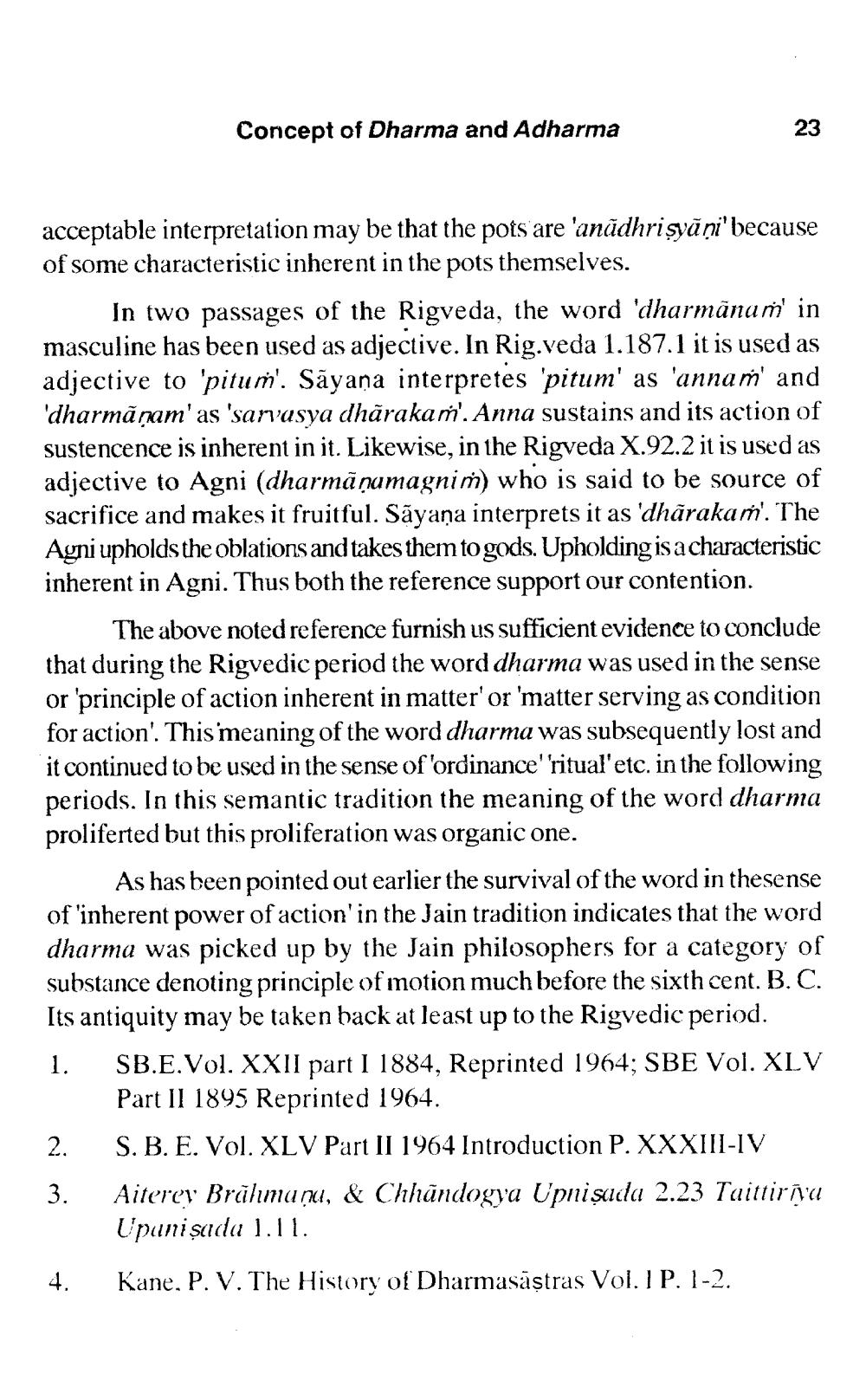________________
Concept of Dharma and Adharma
3
acceptable interpretation may be that the pots are 'anādhrişyāņi' because of some characteristic inherent in the pots themselves.
In two passages of the Rigveda, the word 'dharmānam in masculine has been used as adjective. In Rig.veda 1.187.1 it is used as adjective to 'pitum. Sāyana interpretes 'pitum' as 'annaṁ and 'dharmāņam' as 'sarvasya dhārakan'. Anna sustains and its action of sustencence is inherent in it. Likewise, in the Rigveda X.92.2 it is used as adjective to Agni (dharmāņumagniṁ) who is said to be source of sacrifice and makes it fruitful. Sãyaņa interprets it as 'dhārakaṁ. The Ayni upholds the oblations and takes them to gods. Upholding is a characteristic inherent in Agni. Thus both the reference support our contention.
The above noted reference furnish us sufficient evidence to conclude that during the Rigvedic period the word dharma was used in the sense or 'principle of action inherent in matter' or 'matter serving as condition for action. This meaning of the word dharma was subsequently lost and it continued to be used in the sense of 'ordinance' ritual'etc. in the following periods. In this semantic tradition the meaning of the word dharma proliferted but this proliferation was organic one.
As has been pointed out earlier the survival of the word in thesense of 'inherent power of action' in the Jain tradition indicates that the word dharma was picked up by the Jain philosophers for a category of substance denoting principle of motion much before the sixth cent. B.C. Its antiquity may be taken back at least up to the Rigvedic period. 1. SB.E.Vol. XXII part I 1884, Reprinted 1964; SBE Vol. XLV
Part II 1895 Reprinted 1964. 2. S. B. E. Vol. XLV Part II 1964 Introduction P. XXXIII-IV 3. Aiterev Brălimanui, & Chhāndogya Upnişada 2.23 Taittira'a
Upunişada 1.11. 4. Kane, P. V. The History of Dharmasāştras Vol. I P. 1-2.




